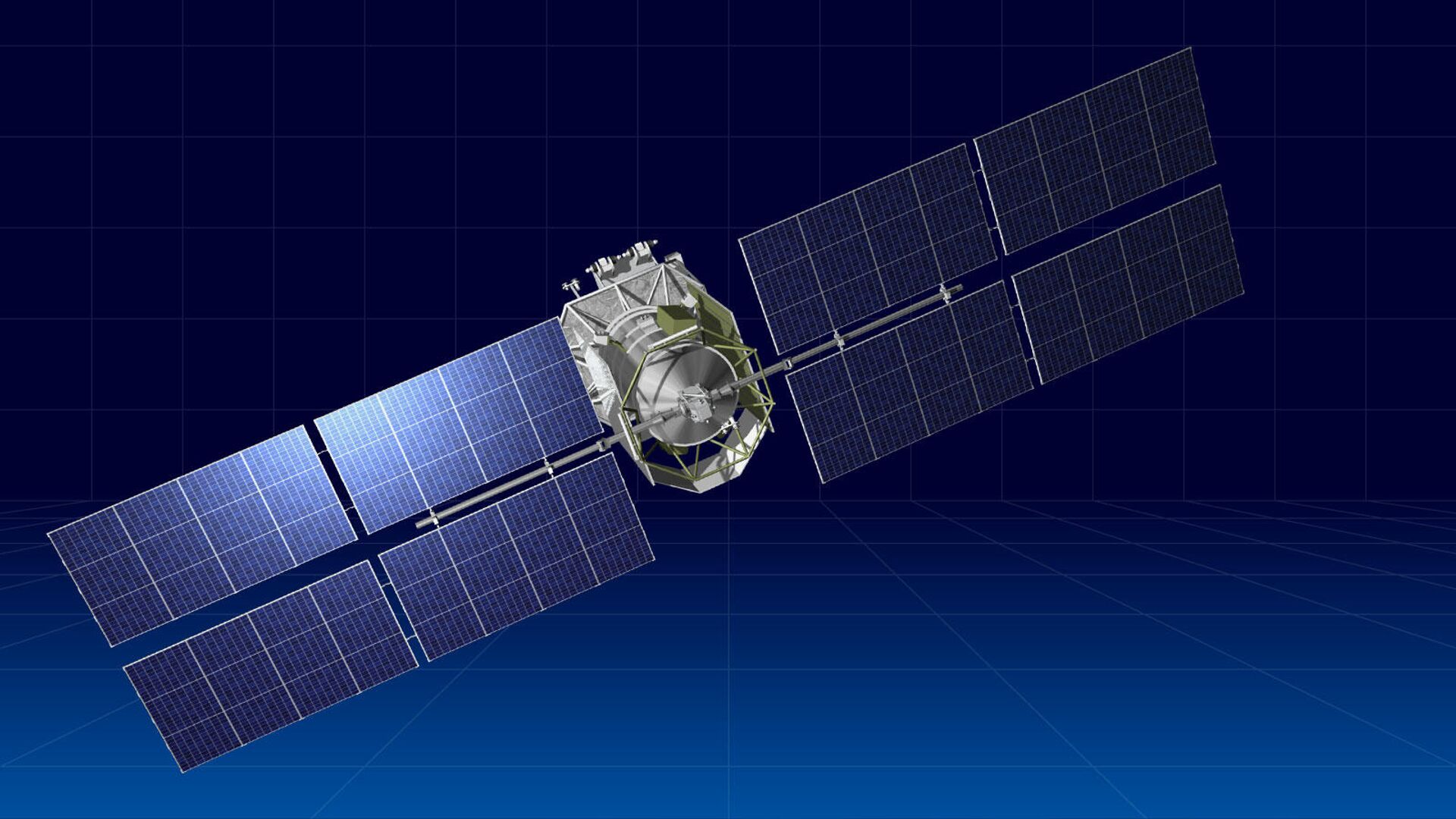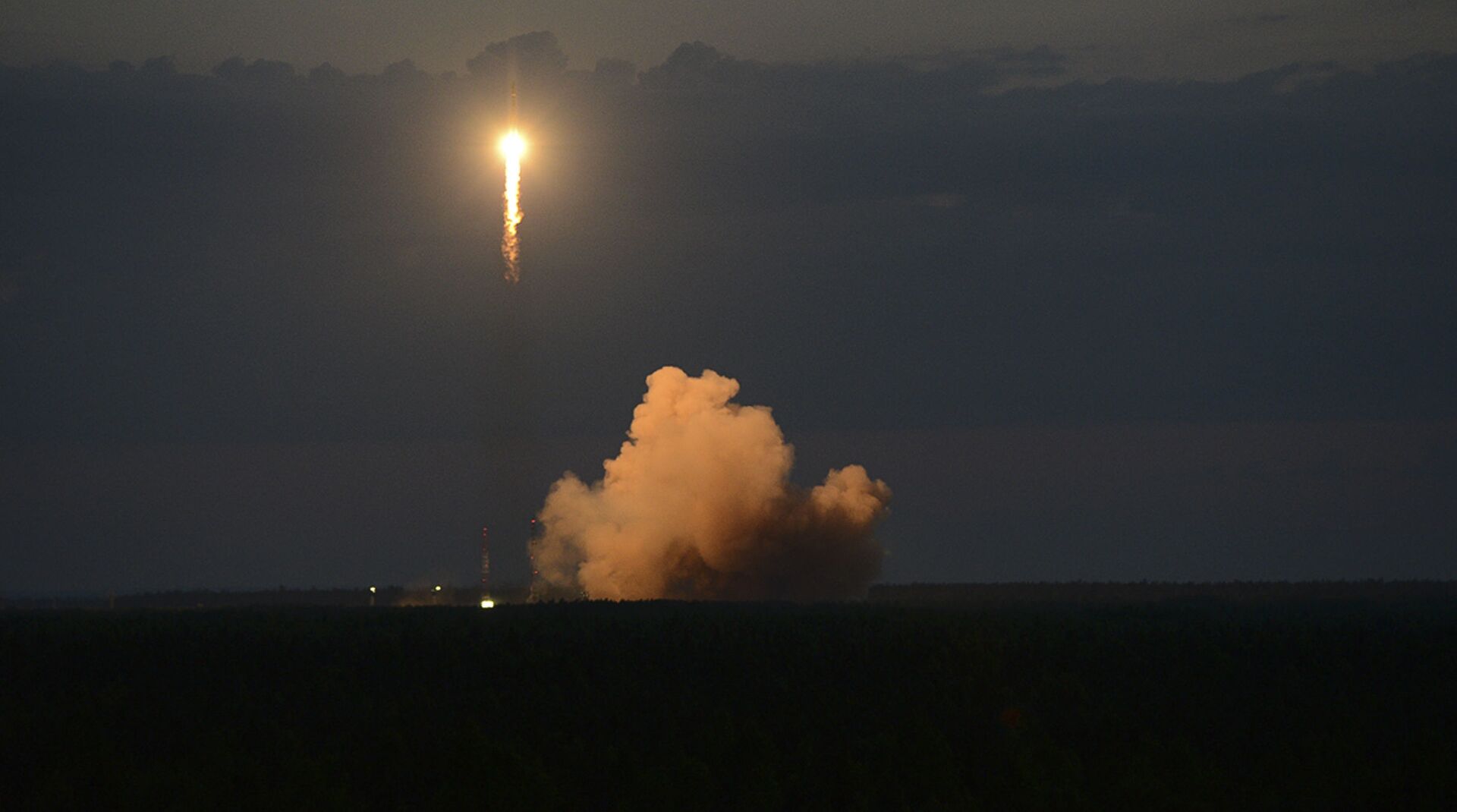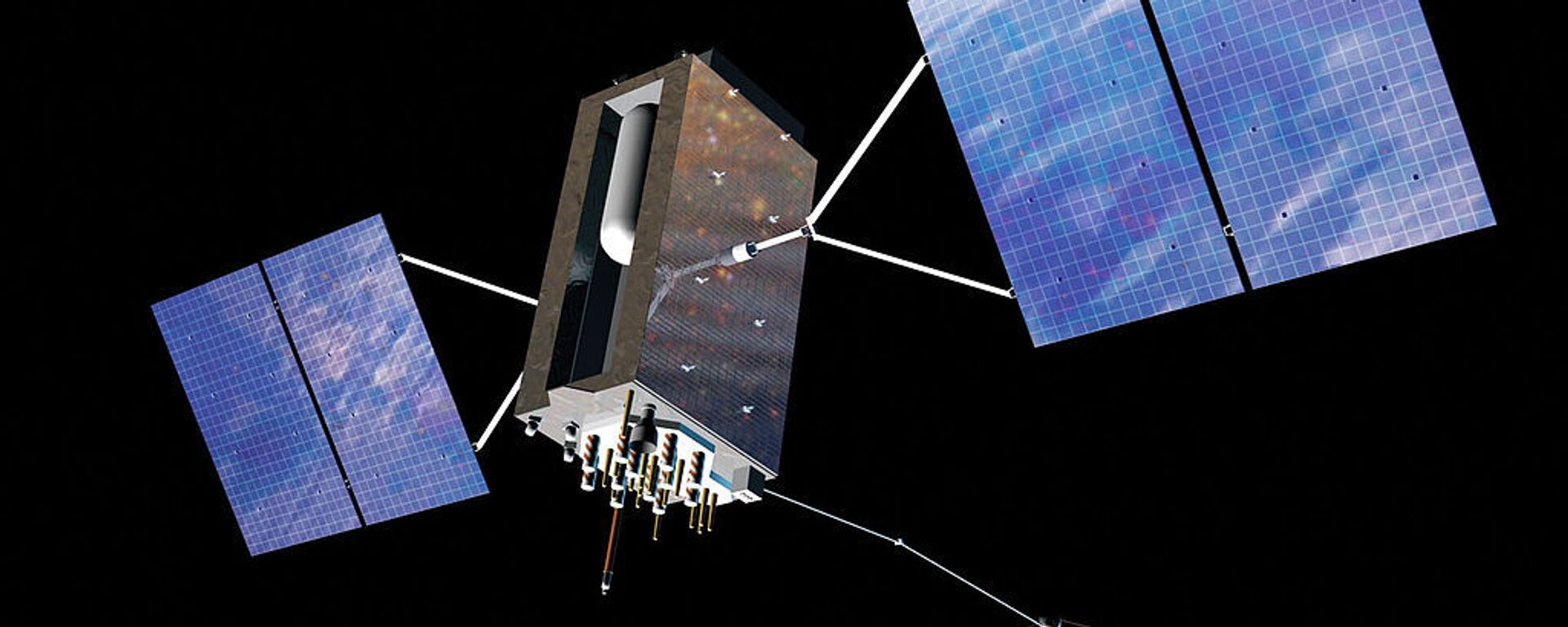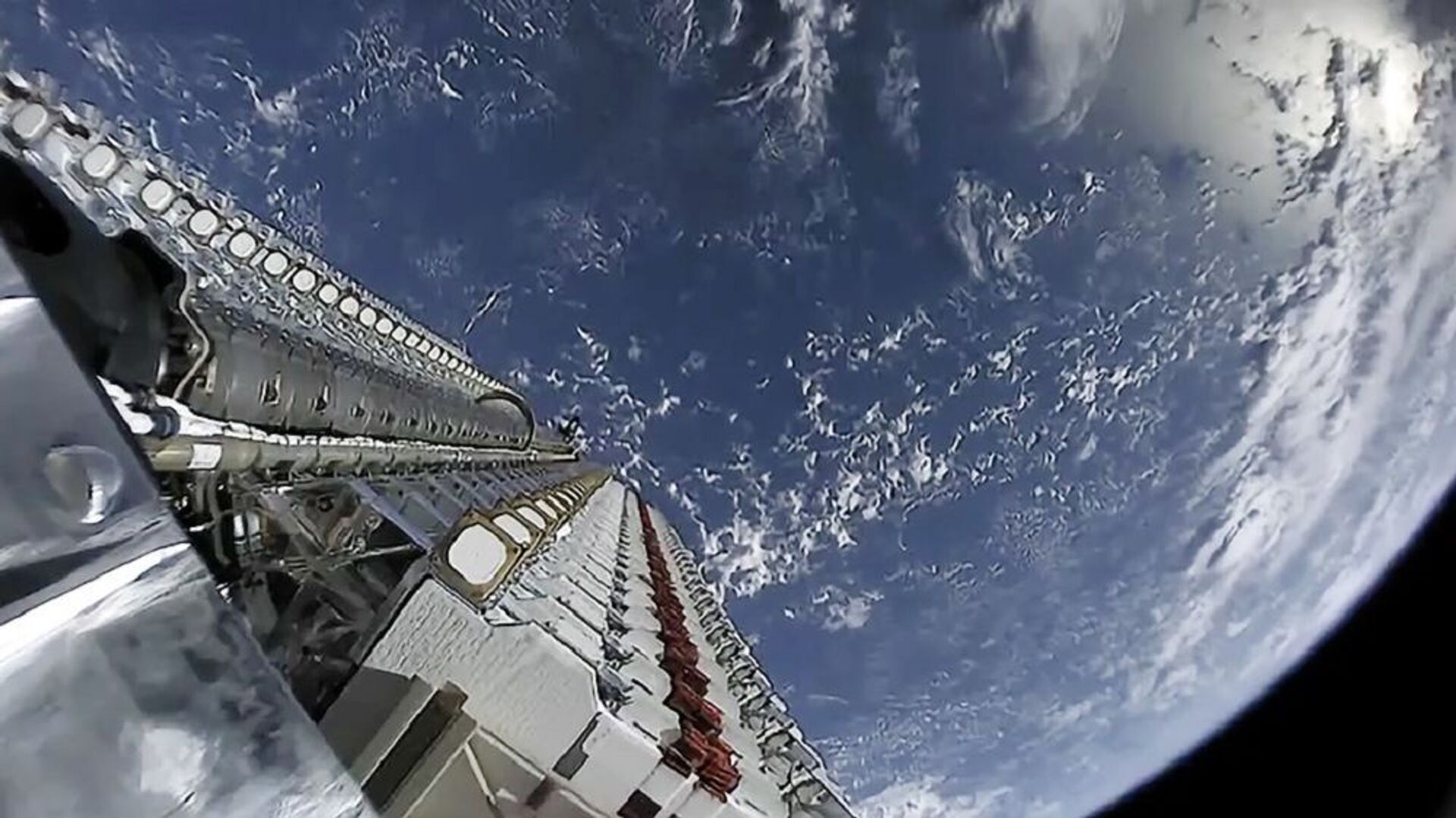Future 'Satellite' Space Race Will See IT Vying for 'Control of War Zone,' Scientist Warns

© Photo : JSC Academician MF Reshetnev Information Satellite Systems
Subscribe
As civilian satellites – flying computers, in a manner of speaking – may sometimes be adapted to military purposes, this can change the very nature of hostilities, unleashing a rivalry among information technology (IT) people for actual "control of a war zone," underscored Nathan Eismont, a leading researcher at the Russian Academy of Sciences.
April 12 is the International Day of Cosmonautics, marked in commemoration of the first human space flight carried out by Soviet cosmonaut Yuri Gagarin in 1962. Satellites were an integral part of the space race, which gained steam in the mid-20th century. Satellites can serve civilian and military purposes, and the ongoing Russian special military operation in Ukraine has shown how important these devices can be in the course of combat operations, be it for intelligence purposes or weapons guidance, etc.
Nathan Eismont, a leading researcher at the Russian Academy of Sciences, told Sputnik about the different types of satellites, and shared his opinion on how the race for satellite advantage is unfolding.
Civilian Versus Military
When it comes to differences between military satellites and civilian ones, the lines are blurred, according to Nathan Eismont. Some satellites may work for the Ministry of Defense, while others similar to them may cater to the needs of the agriculture sphere, unless the satellite is carrying out very specific measurements, such as soil parameters and properties. Military satellites boast good resolution, superior optics, orientation, and if the task requires, photo reconnaissance, with the involvement of optical means, then they are used.

Soyuz-2.1b rocket with Glonass satellite
© AP Photo
Conventional civilian satellites work best when the weather and light conditions are suitable for carrying out measurements, according to the researcher, but military ones have to work in varying conditions, and there are ways to ensure this, such as by using radar equipment, for example.
“I will give an example of maritime reconnaissance satellites. At one time, quite a few of these were launched by the Soviet Union. They operated in the radio frequency range, that is, they had radars on them, and functioned at minimum altitudes, about 300 kilometers. As an apparatus cannot stay at such an altitude for a long time, the devices were equipped with jet engines, which supported their trajectory at a given, rather low altitude. In addition, these satellites have very high energy requirements, which are not required by civilian satellites,” Nathan Eismont explained.
In addition, military satellites may be tailored to special tasks, for example, to check out other devices, their radiation in the X-ray or gamma range. The expert recalled how the Americans at one point launched a new series of satellites whose task was to monitor whether the Soviet Union was conducting nuclear tests. Should such tests be carried out, gamma radiation would immediately be registered.
An additional feature of military devices is, of course, information encoding and special encryption techniques. But even when it comes to civilian satellites, few would want the information they relay to be accessible to others, the researcher pointed out.
As for innovative satellites, Nathan Eismont recalled how the Americans introduced GPS – the Global Positioning System – into the user environment, adding that initially they were not at all happy that due to the use of their satellites, certain objects would be determined with an accuracy that a potential adversary should not have access to. Therefore, they intentionally “dampened” the signal. “It is difficult to say to what extent the Americans are doing this now,” he added.
IT Control Over War Zone
When it comes to geolocation, the scientist recalled Elon Musk, CEO of SpaceX, and his Starlink constellation of satellites, which offers Internet access services. Starlink has reportedly provided Ukraine with an estimated 22,000 devices since the start of Russia's special military operation in February 2022, with terminals distributed among the military and the regime in the capital. However, the tech billionaire discovered that the Ukrainians used Starlink data for the positioning of targets to guide their drones. Accordingly, he reportedly limited Starlink's functions for Ukraine by modifying the software of these devices, said the leading researcher of the Russian Academy of Sciences. The tweaks would purportedly immediately implement a block if objects moved, as determined by the system, with a speed indicating possible military use.
The technology was "never intended to be weaponized," Gwynne Shotwell, the president and chief operating officer of SpaceX, said in February.
It is always necessary to evaluate to what extent initially civilian satellites may be used for military purposes, the expert warned. And there should always be means at hand to act quickly and block such operations.
“Now all satellites are, in essence, flying computers. And on a computer, you can change the software modification to prevent unwanted use of these satellites,” Nathan Eismont said, adding:
“Here we may witness a competition of IT people who actually control the war zone. The very nature of hostilities has changed a lot in the direction of raising the level of intellectual requirements for systems. And whoever attains a higher level in this field has the advantage.”
Western Satellites in Ukraine
Ukraine does not have its own satellites, but the Kiev regime uses foreign ones on its territory, the researcher underscored. Plus, they use general civilian satellites.
Eismont went into more detail regarding the Iridium system – a global communications company with a constellation of satellites in Low-Earth Orbit (LEO), approximately 780 kilometers (485 miles) above the planet's surface.
According to the researcher, initially there was a Soviet-American project to create a global telephone connection system. In its infancy, it turned out to be unprofitable, went bankrupt, and was sold into private hands to a company that works for the CIA.
“I don’t know for sure whether they use it in Ukraine, but this system is publicly available and convenient. So I think it's being used,” Eismont said.
Main Players in 'Satellite' Race
The Americans have their GPS, the Russians have GLONASS, the Europeans have Galileo, and the Chinese boast the home-grown Beidou satellite system - their version of GPS. India has some satellites at the deployment stage, he added, while the Japanese have them on a limited scale.
Accordingly, the main players in the race to gain a competitive edge are the Americans, Russians, and Europeans, with China in hot pursuit, Nathan Eismont pointed out.
While Beijing does not yet boast experience in this field on par with the top players, they will catch up very quickly, just give them a year or two, he added.
Asked if the world is witnessing a military satellite arms race of sorts, Eismont preferred to call it a technology race. He conceded that in the current conditions, these technologies are increasingly being applied in the military field. But there are means of electronic warfare that allow you to neutralize drones.
“In simple terms, these are jammers that suppress or distort the signal. This means that you cannot control a drone, or an airplane… This will lead to very grave errors that will make it impossible to complete tasks. And whoever can make this happen will triumph…Now IT is becoming more and more important, and the development of technologies in this direction will only continue."
While stopping short of naming specific innovations in the development of Russian satellites, pointing out that this is best kept secret from potential adversaries, Nathan Eismont offered an example of Moscow’s edge in the field.
He said that a case in point was the OneWeb Network, a communications company seeking to build broadband satellite Internet services and a rival to Elon Musk’s Starlink.
“Almost all of OneWeb’s satellites, about a hundred, were not only launched by us… 100% of them are equipped with our electric propulsion engines, without which they do not work. Until recently (10-15 years back) only we had such engines… Now Musk is using a similar engine. But OneWeb opted to buy ours due to their reliability," Nathan Eismont said.
Finally, looking to the future, the prospects of the development of the Russian military space program are very positive, irrespective of the sweeping sanctions targeting Russia by the collective West.
“Sanctions make the process somewhat difficult, but I would not call them particularly serious obstacles,” the scientist concluded.



